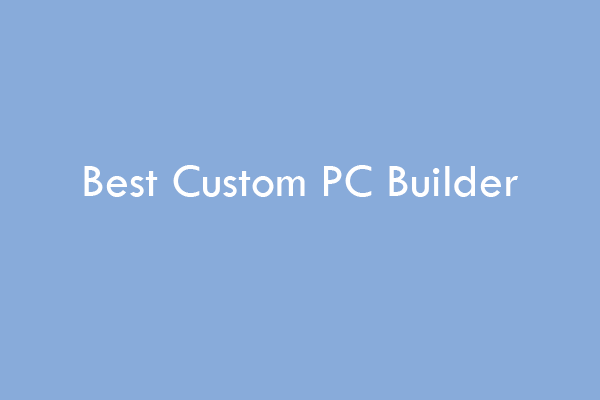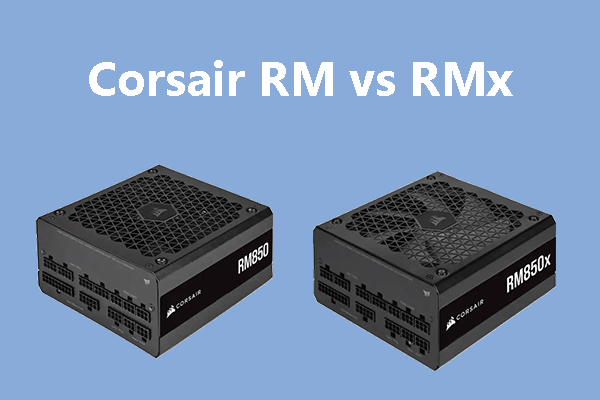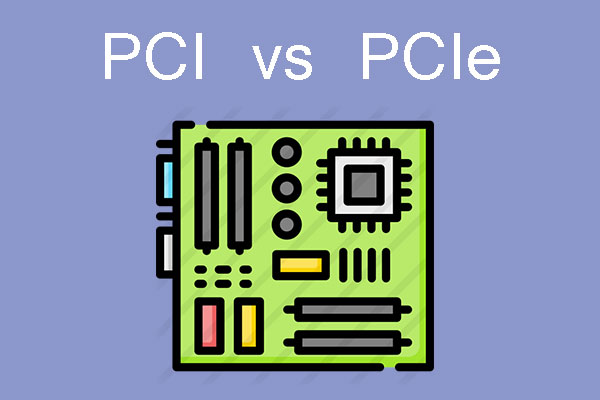If you build a PC or replace the PSU for your PC, you need to choose a proper power supply. What power supply do I need? You may ask this question. When you purchase a PSU for your PC, you need to take some factors into consideration. This post from MiniTool Partition Wizard introduces these factors to you.
#1. Watts
Wattage could be said to be the most important factor for the PSU selection. If the wattage is not enough, the PC won’t boot up. How much wattage does my PC need? You may ask this question. The specific wattage will vary depending on what hardware you use, but you can use a power supply calculator to help you know how much wattage your PC needs.
You can try the following power supply calculators.
- Newegg power supply calculator – You can choose it if your computer build is simple. It only calculates the wattage of the motherboard, CPU, GPU, RAM, and hard drives.
- OuterVision power supply calculator – It allows you to calculate the wattage for more PC components like the liquid cooling system, fans, monitor, and other peripherals.
If these power supply calculators can’t help you calculate the wattage for some components, you just need to plus the wattage requirement of these components.
In addition, it’s better to choose a PSU whose wattage is a little higher than the wattage you need, because some small PC components are ignored when you calculate the wattage. These small PC components also consume some wattage. Another reason is that you may upgrade some PC components in the future.
#2. Power Supply Efficiency
A power supply unit’s job is to convert the existing AC power into DC power so that it can be used by the other components in your PC. However, in the power conversion process, some power will be converted into unnecessary heat.
In general, the more efficient your PSU is, the less power it uses, and the less heat it generates. In addition, inefficient delivery leads to wasted power and more heat, which can potentially decrease the lifespan of your components.
How to find the power conversion efficiency of a PSU? You can refer to the 80 PLUS standard. If a PSU has this standard, it means that this PSU has a power conversion efficiency greater than 80% at 20%, 50%, and full load (100%). In addition, the 80 PLUS has the following six levels:
- 80 Plus
- 80 Plus Bronze
- 80 Plus Silver
- 80 Plus Gold
- 80 Plus Platinum
- 80 Plus Titanium
The higher the level, the better the power conversion efficiency. To know more about the 80 PLUS standard, please read this post from Wikipedia.
#3. Protection Functions
The power supply directly connects to almost every other piece of hardware in your system. If some unexpected things happen to your PSU and it has few protection functions, PC components like motherboard, CPU, GPU, RAM, etc. may be damaged.
When you choose a PSU, you can check if it has the following protection functions:
- Over Current Protection (OCP): Shuts off power if any rail is overloaded beyond a safe level.
- Over Voltage Protection (OVP): Shuts off power if voltages exceed specification.
- Under Voltage Protection (UVP): Shuts off power if voltages drop below specification.
- Short Circuit Protection (SCP): Shuts off power if a short circuit is detected.
- Over Temperature Protection (OTP): Shuts off power if temperatures exceed a specified value.
- Over Power Protection (OPP): Shuts off power if the total output power exceeds a safe level.
#4. Form Factor
PSU form factors are classified into the following types:
- ATX12V/BTX (150mm x 86mm x 140mm)
- ATX large (150mm x 86mm x180mm)
- ATX – EPS (150mm x 86mm x 230mm)
- CFX12V (101.6+48.4mm x 86mm x 96mm)
- SFX12V (125mm x 63.5mm x 100mm)
- TFX12V (85mm x 64mm x175mm)
- LFX12V (62mm x 72mm x210mm)
- FlexATX (81.5 mm x 40.5mm x 150mm)
You need to ensure the PSU form factor is suitable for your PC. Of course, when you purchase a PSU, you also need to check its physical size, making sure it will fit in your case well.
#5. Cables/Connectors
When you purchase a PSU, you should know what cables/connectors it can use to connect to other PC parts. For example:
- ATX 20/24 Pin Connector/Cable: It is used for the motherboard.
- EPS/ATX12V 4/8 Pin Connector/Cable: It is used for the processor.
- PCIe 6/8/12/16 Pin Connector/Cable: It is used for PCI Express graphics cards.
- SATA Cable: It is used for SATA storage devices and other devices that adopt the standard as well, such as RGB hubs and fan controllers.
Bottom Line
This post introduces 5 important factors you need to take into consideration when you purchase a PSU. Of course, apart from the above factors, there are other factors you can consider, such as modularity, RGB lighting, appearance, etc.
What power supply do I need? How much wattage does my PC need? I hope this post is useful to you. In addition, MiniTool Partition Wizard can help you clone the system, manage disks better, and recover data. If you have this need, you can download it from the official website.




User Comments :